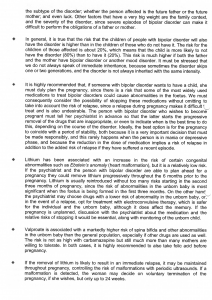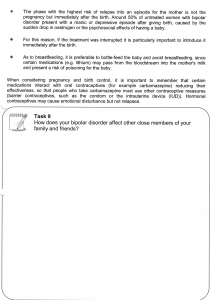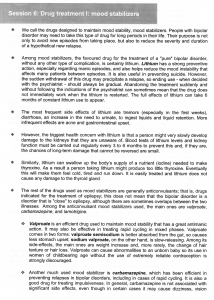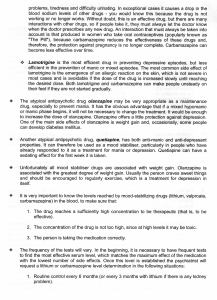Thumbnails will expand in a new window when you click on them. Feel free to print them out and don’t forget to do your homework! 🙂
Week 9 Handouts
Dopamine Pathways
we’ll come back to this later.
And we’re back…
Don’t worry, I have been attending my psychoeducation group, scanning in the handouts and doing my homework, but things have been very hectic at work and I’ve been fighting off a low, and well, this blog has been set aside while I got things sorted. I’ll be putting some headings in here as placeholders and will finish writing the posts in the coming weeks/months.
Let’s talk about Lithium
And I don’t mean the Nirvana song. (Though I’ve put it on just for this occasion.)
Lithium comes up a lot because it is still widely prescribed and doesn’t act quite like the rest of the drugs in the mood stabilizer and antimanic categories.
Lithium is an alkaline metal ion. They turn it into a salt for consumption. It got bit in the 1950s as a treatment for gout, but then they started using it for *everything*.
It is unique in the effects it has on the brain, as it has been found to have a ‘neuroprotective’ effect. Lithium causes a specific neurochemical to stick around that stimulates nerve growth. I found this interesting because severe stress has the opposite effect.
Lithium takes 5 days to build up in the body. They do blood tests because you need to get to between 0.4 and 1.0 because less is not effective, and more has side effects. Beyond 1.5 you are at risk of toxicity.
When taking Lithium you must stay hydrated. Lithium in essence is fulfilling the Na (table salt) role in the body. So dehydration is dangerous because you risk the buildup on Lithium in the system instead of it being flushed out naturally.
We’ll talk more about tremors when we talk about the other drugs, but when it comes to Lithium, fine tremors (fast, small ones) in the hands are quite common, but coarse tremors (slow and more pronounced) can be a sign of toxicity and need to be looked out for.
It’s not a *&#@ spider.
No matter what anyone tells you, it’s not a “spider.” It’s a neuron.

Borrowed from Coastal Carolina University’s website.
http://ww2.coastal.edu/kingw/psyc415/html/neuron.html
I found this image and decided it was one of the best for my needs. We’ll be referring to this often when it comes to discussing drug treatments for bipolar disorder, because my group (I do love them) opted to go for the more “sciency” approach and had the psychiatrist talk us through how the actually work, and I took a lot of notes.
If you’re not interested in getting a grounding in brain chemistry and how neurons talk to each other, you can skip over those posts and just read the handouts. 🙂
For the moment, what you need to know is that tree looking thing on the left is actually repeated on the right, but you can only see the edge of it. Same goes for the other side. Think of it like a big daisy chain, this thing is repeated over and over again but you can only see the edges of the repeat.
Anyway, that big bit is the dendron, the little hairy bits coming off it are dendrites, the long tail is the axon, and most importantly for us… that inset is a closer look at the synapse.
You can kind of see that they were trying to show that it is a ‘lock and key’ kind of functionality, where receptors will only accept certain kinds of neurotransmitters. I think of it like Tetris. 😛
Week 8 Handouts
Pithy Sayings #1
There is a person in our group that has a lot of these fantastic little sayings. We’ve only had a shared history with one, and that was the first one, so I’ll start with that.
This too shall pass.

















